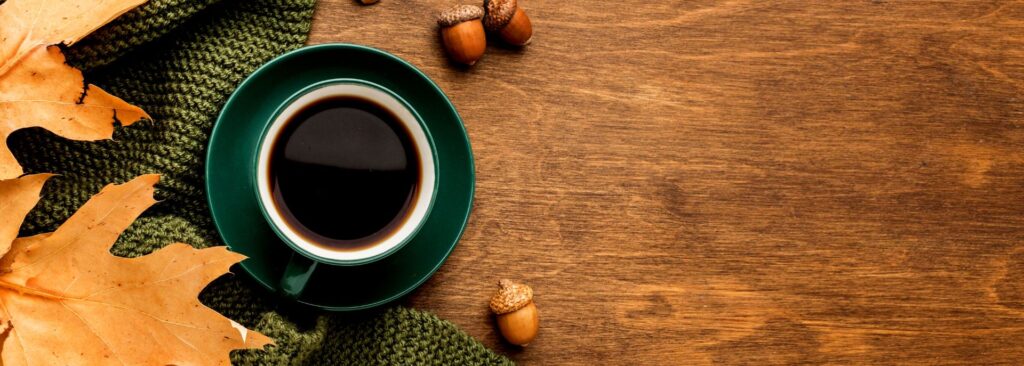The aroma and taste of ground coffee begins to deteriorate immediately after the opening of vacuum packaging or immediately after grinding. Therefore, it is better to grind coffee before cooking. The degree of grinding of coffee depends on how you will prepare it:
COARSE (OR LARGE) GRINDING – grinding 10 seconds (the time is indicated for an ordinary electric coffee grinder without “bells and whistles”). Coffee particles can be up to 0.8 mm in size. This coffee is suitable for cooking in a piston coffee maker or for cooking in a coffee pot, cezve. It is necessary to insist it for 6-8 minutes.
AVERAGE WASH – grinding time – 13 seconds. Extraction time (infusion) – 4-6 minutes. Universal, suitable for many brewing methods, including automatic coffee machines and geyser coffee makers, etc.
THIN MILLET – grinding time – 15-20 seconds, infusion – 1-4 minutes. Used in coffee makers with filters. Oddly enough, fine grinding lasts the longest: small particles lie denser, worsening contact with air.
THIN ESPRESSO GRINDING – such coffee is used in espresso coffee makers (a stream of steam is passed through the coffee).
SUPERTONIAN MISTAKE – such a powder is like flour. Turkish coffee is brewed from it in the Turk.
And theideal option for the house would be a dwarf variety of coffee tree Arabica Nana (Nana), which is a small compact shrub just over 1 meter in height.
The home coffee plant has oblong-pointed leaves of rich green color, which can reach a length of 15 cm. If you strictly observe all conditions of detention, then in the 3rd year of “life” the plant will bloom (a white flower with an extremely pleasant aroma), and then a small crop of coffee beans will appear on it.
At home, the coffee tree does not require any additional pruning to form a bush, since in itself it branches well.
Arabica tree care
In order for coffee Arabica to feel comfortable, it is recommended to place it in a well-lit place, but at the same time avoid direct sunlight.
Due to the fact that the home coffee plant is thermophilic, the air temperature in the room with a tree should not fall below plus 19 degrees. At the same time, indoor coffee care requires regular spraying with water, as it does not tolerate dry air. Also, the plant needs abundant watering, which should increase as the temperature in the room rises.
The plant forms a small beautiful bush, which is easy to keep at home, because it needs partial shade. Coffee tree needs good ventilation, but it should not be drafted. Cut off the lost color or dried leaves with scissors at the very base of the petiole.

How to store coffee?
How to store coffee?
No one wants to buy good coffee and lose half of its aroma and taste due to improper storage.
Three simple rules will allow you to maintain a rich taste and aroma until the last cup!
How much?
Even with proper storage, time does not benefit coffee beans (especially ground ones): 20 days have passed since purchase, and open packaging no longer fills the kitchen with an invigorating aroma?
The world’s best coffee is made in Italy
Until coffee is grown in Italy in factories or in greenhouses or in an artisanal way, fresh coffee will not be added there, since coffee does not grow at all in Italy. The popularity of Italy as a supplier of good coffee is mainly due to roasters and manufacturers of coffee mixes for espresso coffee. There is no doubt that for the average Italian coffee is a necessity, but there are not so many true coffee connoisseurs. In Italy, a certain standard of coffee has developed and as long as it is at the level, coffee will be affordable and cheap! Most of the green coffee entering the Italian market is “above average”, but not of the “specialty” quality, and the Italian coffee that is exported is designed to brew espresso of the “above average” level
2. Robusta grains are needed in espresso mixtures to give crema and extract the correct consistency, which is why Italians use them.
Robusta is used mainly for instant coffee, in Italian mixtures it became present for one simple reason – cheap Robusta grains. Crema and the extract itself proved to be a desirable side effect due to the fact that Robusta is a softer grain than Arabica, unless you usually allow an elastic flavor. In the rather poor southern part of Italy, people grew up on mixtures with Robusta and are accustomed to this taste, although in the north of the country there are already roasters that use 100% Arabica. Most Robusta around the world is still used for one old reason – cheapness.
3. How we learned about coffee: when Haldi, an Arab shepherd, discovered that his sheep behave more lively after eating the fruit of the coffee tree.
Coffee has been actively cultivated in Yemen (Arabia) since at least 1000 AD. It is confirmed that coffee came to us from Ethiopia, as evidenced by archaeological excavations that support the theory of the cultivation and consumption (in the form of fruits, roasted beans, etc.) of coffee thousands of years ago. The roasted coffee beans used to make the drink were invented in the same Yemen and date back to 1200 AD.
4. How fresh the coffee is, you can say by looking at it
Buttery, glossy-looking coffee is presumably fresher than the kind of gloomy, dry coffee. Truth be told, what coffee looks like is determined by so many factors, including: roasting level, oil content, storage and transportation conditions, etc. Only taste and aroma can give a true conclusion.
5. There is a single degree of roasting, in which the most correct taste of espresso is achieved
. First, this myth was promoted in the USA by Alfred Pete, and later Starbucks adopted this slogan to promote the darkest roasting among world networks. Perhaps the only way to prove the opposite is to take very high quality grains (Kenya AA or Costa Rica Tarrazu) and fry with varying degrees, and trust me, each of them will have its own unique taste, aroma, balance…
6. French Roast, Italian Roast, Vienna Roast, Espresso Roast names determine the quality of roasting
Besides the fact that you can find the widest selection of roasting degrees in France, Italy, Austria, Espresso Roast can be anything. The only standard in the coffee industry determining the degree of roasting is the Agtron system, which relies on the comparative characteristics of roasted coffee to standard “plates”. When people ask for “French”, “Italian” or “Espresso” they mean “Dark”, sometimes “Dark and Oily”.
7. You can store coffee as much as you like in the package
It wouldn’t be bad, would it? Type designation: “Use to …” are actually mythical. Coffee emits flavoring substances constantly, in the package this process is somewhat slower than in air. Therefore, coffee should be consumed in a very short time after roasting.
8. There is one size of ground coffee for different cooking methods
In supermarkets, you can find packs of ground coffee along with the words: “Suitable for…” and different pictures, portafilters, coffee machines, etc. truth be told, for each process there is a combination of preparation, grinding, water and coffee temperatures that working together should give the expected result. The definition of “degree of grinding” stands for how long it takes for water to pass through coffee at the correct temperature, the less time the less grinding.
9. It takes a lot of money to become a coffee connoisseur
In my opinion, to start you need about $ 30 – a French press and 250 p. of excellent coffee.
10. It is impossible to achieve the same result at home as the pros do in coffee shops
. It is even necessary, everything that barista pros can do can be done at home. It depends only on your financial capabilities and enthusiasm. In combination with knowledge, skills, practice, you can achieve even greater results. At least latte art is done at home calmly.






